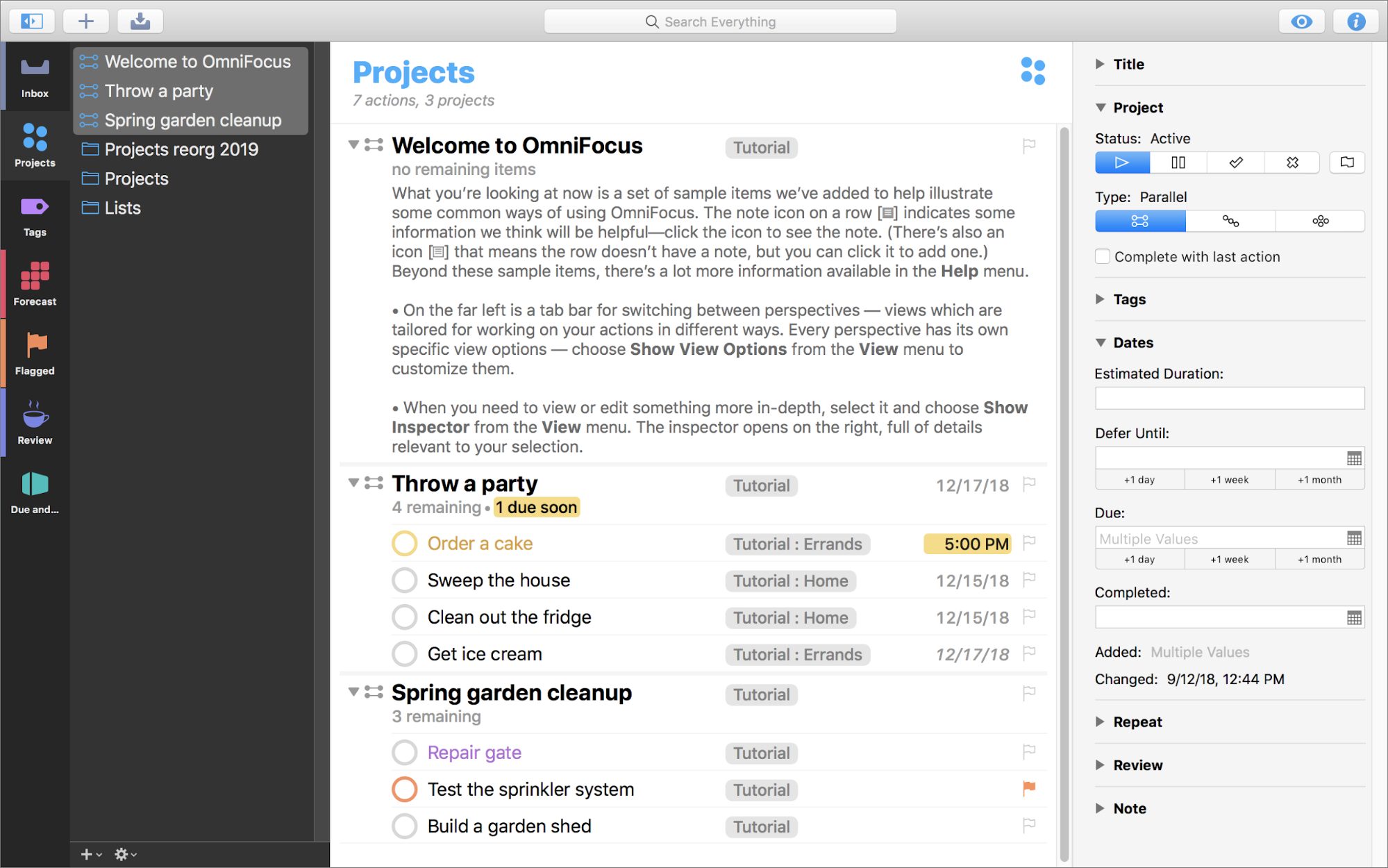

If you’ve set items to clean up when changing perspectives, they remain until you navigate elsewhere or clean up manually by clicking Clean Up in the toolbar, or choosing Organize > Clean Up (Command-K). When you mark an item complete by clicking its status circle, the item may not immediately disappear from the outline. If you have an item with more than one status, the circle will take on multiple colors simultaneously to communicate each relevant attribute. Repeating items are also distinguished by the ellipsis in their center. Status circles also convey important information about an item: items can be due soon (amber), overdue (red), or flagged (orange). Click the circle, and the item is complete. Notes, attachments, and flagged status can’t be assigned to folders or tags.Īn item’s status circle is the target for checking it off when it is done. Notes and Attachments, Flag-These icons indicate whether there are notes or attachments associated with the project itself (as opposed to the items within it), and whether the project is flagged. Item Count-The total number of items in the project or tag.ĭue Summary-When there is enough room in the row, this line shows a breakdown of the due states (due soon and overdue) of items in the project, folder, or tag. In addition to Active (no icon), Projects can be On Hold, Completed, or Dropped, while tags can be Active, On Hold, or Dropped. Row Status-Projects and tags with a status other than Active display it here. Projects are further broken down by type: Sequential, Parallel, and Single Actions.ĭisclosure Triangle-Click to collapse or expand the folder, project, or tag to hide or reveal its contents. Row Type Icon-Projects, folders, and tags have icons next to them to help remind you of your current perspective and the row’s relation to those around it. In addition to the common attributes of Inbox items, rows for projects, folders, and tags can have a variety of other useful information.

Notes and Attachments, Flag-These icons indicate whether or not the item includes notes or attachments (the icon is filled when a note or attachment is present), and whether the item is flagged. An item can have as many tags as you want if there are more tags than horizontal space in the row, additional tags are indicated by an ellipsis.ĭates-If the item has due or defer dates assigned, they will appear here when relevant (once a defer date has passed it is no longer displayed).

Tags-Any tags assigned to the item appear here. Since this is an Inbox item (and Inbox items with projects are usually cleaned up), this item is listed without a project. Project-If the item has a project assigned, its location in the project hierarchy appears here. Black title text generally indicates that an item is actionable items that are completed, blocked, on hold, or parents of groups have grey title text instead (unless they are due soon or overdue). Click an active item’s status circle to mark it complete. Status Circle-A visual representation of the completion status of the item, along with other important attributes. The figure below is a breakdown of an item in the Inbox that’s packed with additional information about the task at hand, using the default Columns presentation. Rows display all sorts of information about an item, like the project it belongs to, any relevant tags, due dates, and completion status in the form of status circles.īy default, rows in the outline use the Columns layout option for presenting data. The OmniFocus outline is composed of rows that represent items (to-dos that you capture with OmniFocus) or other pieces of your organizational framework like folders or tags. The name of your current perspective appears at the top of the outline, along with a count of the items currently visible. You can narrow your concentration on a few things you’d like to accomplish in the near term with Forecast, tackle things contextually with Tags, or get a broad overview of the work ahead across a number of Projects, for example. The items you see in the outline depend on the perspective you are viewing. This chapter describes the outline in its component parts, and details the purpose of each. Interacting with items in the outline-adding new ones, marking them complete, or organizing them into projects and groups-is one of the main ways OmniFocus helps you get stuff done. Tasks that you add to OmniFocus are represented as a list of actionable items in the outline.


 0 kommentar(er)
0 kommentar(er)
